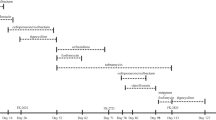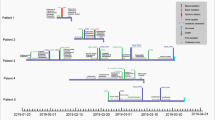Abstract
Objective
The prevalence of carbapenem-resistant Klebsiella pneumoniae (CR-KP) is a global public health problem. It is mainly caused by the plasmid-carried carbapenemase gene. Outer membrane vesicles (OMVs) contain toxins and other factors involved in various biological processes, including β-lactamase and antibiotic-resistance genes. This study aimed to reveal the transmission mechanism of OMV-mediated drug resistance of Klebsiella (K.) pneumoniae.
Methods
We selected CR-KP producing K. pneumoniae carbapenemase-2 (KPC-2) to study whether they can transfer resistance genes through OMVs. The OMVs of CR-KP were obtained by ultracentrifugation, and incubated with carbapenem-sensitive K. pneumoniae for 4 h. Finally, the carbapenem-sensitive K. pneumoniae was tested for the presence of blaKPC-2 resistance gene and its sensitivity to carbapenem antibiotics.
Results
The existence of OMVs was observed by the electron microscopy. The extracted OMVs had blaKPC-2 resistance gene. After incubation with OMVs, blaKPC-2 resistance gene was detected in sensitive K. pneumoniae, and it became resistant to imipenem and meropenem.
Conclusion
This study demonstrated that OMVs isolated from KPC-2-producing CR-KP could deliver blaKPC-2 to sensitive K. pneumoniae, allowing the bacteria to produce carbapenemase, which may provide a novel target for innovative therapies in combination with conventional antibiotics for treating carbapenem-resistant Enterobacteriaceae.
Similar content being viewed by others
References
Pranavathiyani G, Prava J, Rajeev AC, et al. Novel Target Exploration from Hypothetical Proteins of Klebsiella pneumoniae MGH 78578 Reveals a Protein Involved in Host-Pathogen Interaction. Front Cell Infect Microbiol, 2020,10:109
Martin RM, Bachman MA. Colonization, Infection, and the Accessory Genome of Klebsiella pneumoniae. Front Cell Infect Microbiol, 2018,8:4
Zhang Y, Jin L, Ouyang P, et al. Evolution of hypervirulence in carbapenem-resistant Klebsiella pneumoniae in China: a multicentre, molecular epidemiological analysis. J Antimicrob Chemother, 2020,75(2):327–336
Zhang Y, Zeng J, Liu W, et al. Emergence of a hypervirulent carbapenem-resistant Klebsiella pneumoniae isolate from clinical infections in China. J Infect, 2015,71(5):553–560
Sherry NL, Lane CR, Kwong JC, et al. Genomics for Molecular Epidemiology and Detecting Transmission of Carbapenemase-Producing Enterobacterales in Victoria, Australia, 2012 to 2016. J Clin Microbiol, 2019,57(9):e00573–19
Russo TA, Marr CM. Hypervirulent Klebsiella pneumoniae. Clin Microbiol Rev, 2019,32(3):e00001–19
Gupta N, Limbago BM, Patel JB, et al. J. Carbapenem-resistant Enterobacteriaceae: epidemiology and prevention. Clin Infect Dis, 2011,53:60–67
Logan LK, Weinstein RA. The Epidemiology of Carbapenem-Resistant Enterobacteriaceae: The Impact and Evolution of a Global Menace. J Infect Dis, 2017, 215:S28–S36
Hong J, Dauros-Singorenko P, Whitcombe A, et al. Analysis of the Escherichia coli extracellular vesicle proteome identifies markers of purity and culture conditions. J Extracell Vesicles, 2019,8:1632099
Toyofuku M, Nomura N, Eberl L. Types and origins of bacterial membrane vesicles. Nat Rev Microbiol, 2019,17:13–24
Nevermann J, Silva A, Otero C, et al. Identification of Genes Involved in Biogenesis of Outer Membrane Vesicles (OMVs) in Salmonella enterica Serovar Typhi. Front Microbiol, 2019,10:104
Rumbo C, Fernandez-Moreira E, Merino M, et al. Horizontal transfer of the OXA-24 carbapenemase gene via outer membrane vesicles: a new mechanism of dissemination of carbapenem resistance genes in Acinetobacter baumannii. Antimicrob Agents Chemother, 2011,55:3084–3090
Liao YT, Kuo SC, Chiang MH, et al. Acinetobacter baumannii Extracellular OXA-58 Is Primarily and Selectively Released via Outer Membrane Vesicles after Sec-Dependent Periplasmic Translocation. Antimicrob Agents Chemother, 2015,59:7346–7354
Lin J, Zhang W, Cheng J, et al. A Pseudomonas T6SS effector recruits PQS-containing outer membrane vesicles for iron acquisition. Nat Commun, 2017,8:14888
Martora F, Pinto F, Folliero V, et al. Isolation, characterization and analysis of pro-inflammatory potential of Klebsiella pneumoniae outer membrane vesicles. Microb Pathog, 2019,136:103719
Jasim R, Han ML, Zhu Y, et al. Lipidomic Analysis of the Outer Membrane Vesicles from Paired Polymyxin-Susceptible and -Resistant Klebsiella pneumoniae Clinical Isolates. Int J Mol Sci, 2018,19(8):2356
Cahill BK, Seeley KW, Gutel D, et al. Klebsiella pneumoniae O antigen loss alters the outer membrane protein composition and the selective packaging of proteins into secreted outer membrane vesicles. Microbiol Res, 2015,180:1–10
Wu G, Ji H, Guo X, et al. Nanoparticle reinforced bacterial outer-membrane vesicles effectively prevent fatal infection of carbapenem-resistant Klebsiella pneumoniae. Nanomedicine, 2020,24:102148
Jing X, Zhou H, Min X, et al. The Simplified Carbapenem Inactivation Method (sCIM) for Simple and Accurate Detection of Carbapenemase-Producing Gram-Negative Bacilli. Front Microbiol, 2018,9:2391
Jung AL, Hoffmann K, Herkt CE, et al. Legionella pneumophila Outer Membrane Vesicles: Isolation and Analysis of Their Pro-inflammatory Potential on Macrophages. J Vis Exp, 2017, (120):55146
Hopkins KL, Meunier D, Naas T, et al. Evaluation of the NG-Test CARBA 5 multiplex immunochromatographic assay for the detection of KPC, OXA-48-like, NDM, VIM and IMP carbapenemases. J Antimicrob Chemother, 2018,73(12):3523–3526
Wan D, Jing X, Zhou H, et al. Differences between meropenem and imipenem disk to detect carbapenemase in gram-negative bacilli using simplified carbapenem inactivation method. J Infect Chemother, 2020,26:636–639
Gonzalez LJ, Bahr G, Nakashige TG, et al. Membrane anchoring stabilizes and favors secretion of New Delhi metallo-beta-lactamase. Nat Chem Biol, 2016,12:516–522
Chatterjee S, Mondal A, Mitra S, et al. Acinetobacter baumannii transfers the blaNDM-1 gene via outer membrane vesicles. J Antimicrob Chemother, 2017,72: 2201–2207
Schaar V, Nordstrom T, Morgelin M, et al. Moraxella catarrhalis outer membrane vesicles carry beta-lactamase and promote survival of Streptococcus pneumoniae and Haemophilus influenzae by inactivating amoxicillin. Antimicrob Agents Chemother, 2011,55(8):3845–3853
Author information
Authors and Affiliations
Corresponding author
Ethics declarations
The authors declare that they have no conflict of interest.
Additional information
This work was partially supported by the National Natural Science Foundation of China (No. 31771189), the Wuhan Health Commission (No. WX18C17 and No. WX19Q31), and the Natural Science Foundation of Hubei Province, China (No. 2017CFA065 and No. WJ2019H378).
Rights and permissions
About this article
Cite this article
Chen, Lj., Jing, Xp., Meng, Dl. et al. Newly Detected Transmission of blaKPC-2 by Outer Membrane Vesicles in Klebsiella Pneumoniae. CURR MED SCI 43, 80–85 (2023). https://doi.org/10.1007/s11596-022-2680-7
Received:
Accepted:
Published:
Issue Date:
DOI: https://doi.org/10.1007/s11596-022-2680-7




